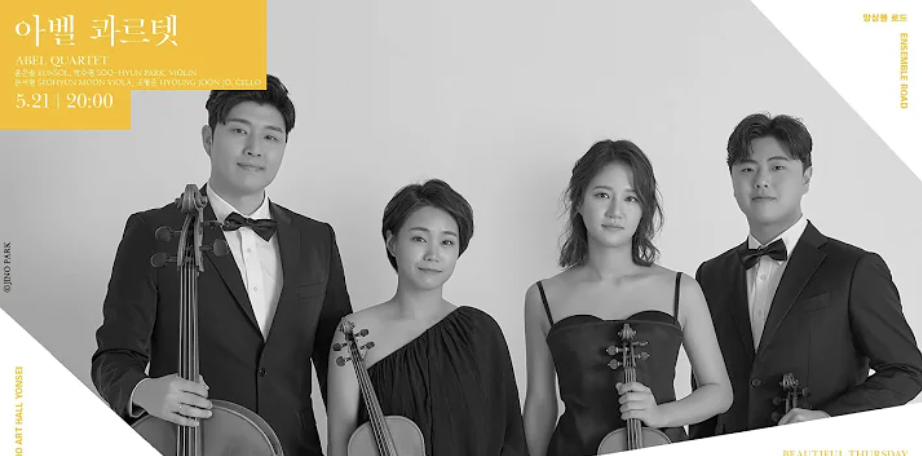Ensemble Road Series – Abel Quartet
Ludwig van Beethoven : String Quartet No.11 in f minor, “Serioso”, Op.95
I. Allegro con brio
II. Allegretto ma non troppo
III. Allegro assai vivace ma serioso
IV. Larghetto espressivo – Allegretto agitato – Allegro
Ludwig van Beethoven’s String Quartet No. 11 in F minor, Op. 95, from 1810, was his last before his late string quartets. It is commonly referred to as the “Serioso,” stemming from his title “Quartett Serioso” at the beginning and the tempo designation for the third movement.
It is one of the shortest and most compact of all the Beethoven quartets, and shares a tonality (F) with the first and last quartets Beethoven published (Op. 18, no. 1, and Op. 135). In character and key, as well as in the presence of a final frenetic section in the parallel major, it is related to another composition of Beethoven’s middle period — the overture to his incidental music for Goethe’s drama Egmont, which he was composing in the same year he was working on this quartet.
The autograph manuscript for this quartet is inscribed “October 1810”, but the paper on which it appears does not match the variety Beethoven is known to have used at that time. It is more likely that he finished it several months later. It premiered in 1814 and appeared in print two years later, dedicated to Nikolaus Zmeskall. Beethoven stated in a letter to George Smart that “The Quartet [Op. 95] is written for a small circle of connoisseurs and is never to be performed in public.” Upon listening to the piece, it becomes apparent why he made that assertion. This piece would have been quite out of character in 1810: it is an experiment on compositional techniques the composer would draw on later in his life. (Techniques such as shorter developments, interesting use of silences, metric ambiguity, seemingly unrelated outbursts and more freedom with tonality in his sonata form.)
Information from Wikipedia

No responses yet